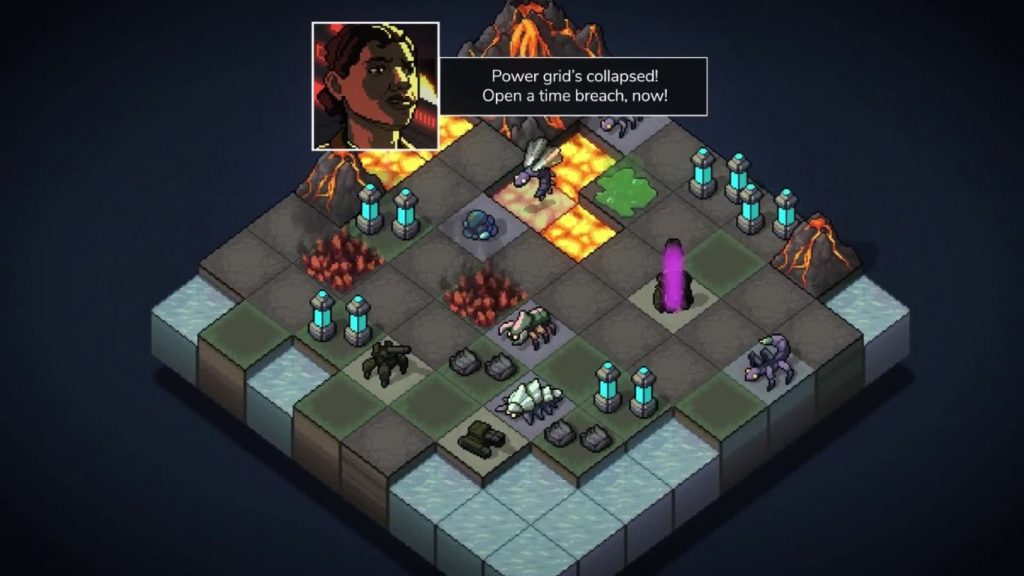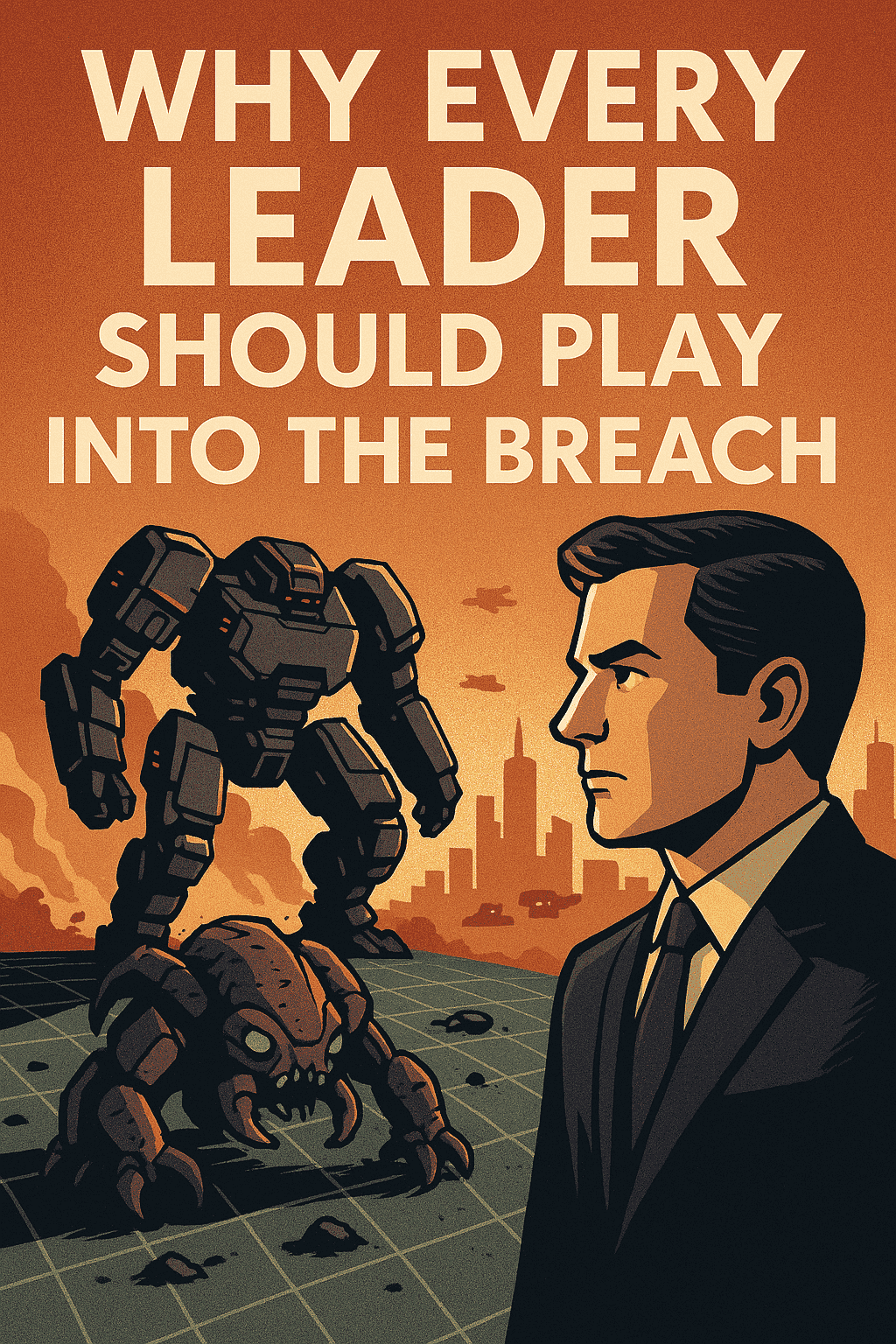Let me share something with you, leader to leader. I’ve sat through my share of leadership seminars. I’ve read the books, I’ve seen the PowerPoint presentations with stock photos of eagles soaring. They all talk about vision, synergy, and managing crises. But talking about a crisis and living through one, even a simulated one, are two vastly different things. I want to tell you about the most potent and unexpected leadership training tool I’ve ever encountered. It’s not a workshop or a book. It’s a video game called Into the Breach.
I know what you might be thinking. A game? About giant robots fighting bugs? But bear with me, because behind that simple premise is a relentless, psychological crucible that stress-tests the very core of what it means to lead. It isolates the most difficult parts of our jobs—making impossible choices under pressure, sacrificing for the greater good, building teams that truly click—and forces you to practice them, turn after intense turn. It’s a dojo for the leadership mind, and frankly, I believe it’s an experience that can make any of us better at what we do.
The Ultimate Crucible for Crisis Management: Thriving Under Perfect Pressure
The first thing that strikes you about Into the Breach is something that feels completely alien to most games: you have perfect information. You know exactly what disaster is about to strike. You see every enemy’s move before it happens. There are no surprises. And let me tell you, that is infinitely more stressful than being ambushed.
It perfectly mirrors a type of leadership crisis we all face. It’s not the sudden, out-of-nowhere problem; it’s the one you see coming. It’s the quarterly report with the ugly numbers you knew were coming. It’s the competitor’s product launch that you’ve been tracking for months. The data is all there, clear as day, showing you that multiple bad things are about to happen simultaneously. The pressure isn’t in guessing what’s next; it’s in the crushing weight of having to choose which fire to fight when you know you can’t possibly put them all out.
The game forces you, again and again, to abandon the fantasy of a perfect outcome. It trains you to calmly survey a landscape of guaranteed negative results and deliberately choose the path of least damage. It’s not about winning; it’s about surviving to fight another day.
My Experience on the Grid, and in the Office
In the game, a typical turn feels like this: A monster is about to smash a hospital, costing me two points from my Grid—the only thing that truly signals my failure. At the same time, another monster is about to disable my best mech, taking my star pilot out of the fight. I can only stop one. My gut screams to protect my guy, my most valuable asset. But the game teaches you a colder logic.
This is a scenario I’ve seen play out in business time and again. I once had a top team preparing for a make-or-break presentation to a huge potential client. At the same time, a critical system failure threatened to take our entire platform offline for our existing customers. We didn’t have the people to do both perfectly. It was that same gut-wrenching choice. Do we risk the massive new contract (the “Grid Power”) or risk damaging our reputation with our loyal user base (our “best mech”)?
Into the Breach is like a flight simulator for that exact decision. It taught me to quantify the stakes dispassionately. The mech, the pilot—they’re recoverable. The Grid is not. You learn to make the painful but correct call: sacrifice the mech, save the Grid. In my real-world crisis, we made a similar call, focusing on the existing client relationship over the potential new one. The game trains that mental muscle, allowing you to make those high-stakes calls with clarity instead of panic.
Ruthless Prioritization: Mastering the Art of Strategic Triage
As a leader, you’re constantly being pulled in a dozen different directions. Every department has an “urgent” priority. Every new idea is “the next big thing.” If you try to do everything, you’ll accomplish nothing. I’ve never seen a tool that teaches the discipline of ruthless prioritization better than Into the Breach.
The lesson is brutally simple: only one thing matters. The Grid Power. Everything else—your mechs’ health, your pilots’ lives, cool weapons, bonus rewards—is a resource to be spent in defense of that one thing. When the Grid hits zero, you’ve failed the people you were sent to protect. It’s a stark, binary condition that brings incredible focus.
At first, I tried to do it all. I’d let a building take a hit to save my mech from a scratch, or chase a bonus objective at the expense of optimal positioning. And I would lose, every time. I had to learn, through painful failure, to let go of the “nice-to-haves” to protect the “must-have.”
My Lesson: What’s Your “Grid Power”?
In the game, it’s a constant test. A special Vek appears, and killing it will grant you a bonus reward. But it’s positioned on the far side of the map. To go after it means pulling a mech away from the buildings it’s supposed to be protecting. A direct attack on another Vek targeting a building is right there. The temptation of the bonus is strong. But you have to let it go. It’s noise. The signal is protecting the Grid.
I started asking myself: what is my organization’s “Grid Power”? Is it our financial solvency? Our customer trust? Our brand reputation? It’s the one thing that, if it hits zero, means the game is over for us. This framework brought a new clarity to my decision-making. We were presented with a very profitable but ethically gray opportunity once. It was a tempting “bonus objective.” But taking it on would have risked our brand’s reputation—our Grid Power. The lesson from the game was echoing in my head. We walked away. Great leaders aren’t just defined by what they do, but by what they choose not to do to protect their core mission.

The Economics of Sacrifice: Spending Resources to Secure the Future
This is the lesson that hurts the most, and it’s the one that feels most like real leadership. We don’t like to talk about sacrifice in such stark terms, but we all know it’s part of the job. It’s about making a deliberate choice to accept a painful loss now for a much greater gain later. Into the Breach makes this concept tangible.
I’m talking about the “body block.” The moment you realize the only way to save a critical piece of the Grid is to move your best pilot, in your most upgraded mech, directly into the path of an attack you know they won’t survive. It feels awful. It feels like a failure. But it’s not. It’s a strategic transaction. You are “spending” your pilot’s life to buy the survival of the timeline.
It’s a powerful lesson in overcoming emotional attachment and the sunk cost fallacy. I’d spent an entire campaign leveling up a pilot, getting them the best skills. They felt irreplaceable. But the game’s cold logic forced me to see them as a resource. And sometimes, the best use of a resource is to spend it completely.
The Hardest Call, In the Game and Out
In the game: I’ll never forget the first time I had to do it. My star pilot, Abe, was in my Prime Mech. A single attack from a Vek Leader was about to wipe out three buildings. No other options. I moved Abe into the blast zone. The screen flashed “PILOT KILLED.” My stomach dropped. But the buildings stood. We won the mission and saved the timeline. It was a tactical tragedy that resulted in a strategic masterpiece.
In leadership: This is the toughest part of our job. It’s closing down a department that, while profitable, no longer fits the company’s future vision. It means letting go of good people, loyal people (“your star pilot”). It’s a painful, gut-wrenching decision. But you’re doing it to free up resources and focus, to ensure that the entire organization (“the Grid”) can survive and thrive in the future. The game doesn’t make these decisions easy, but it does make them clear. It trains you to make the hard call for the right reasons, even when it feels terrible.
Building High-Synergy Teams: Beyond Individual Performance
I think many of us fall into the trap of trying to build a team of individual rock stars. We hire the “10x engineer” or the “sales superstar” and hope their individual brilliance will carry the day. Into the Breach showed me just how wrong that approach is. The game is a stunning testament to the power of synergy.
Most individual mechs are actually quite weak. Their abilities seem limited, sometimes even useless on their own. But when you put them together in a squad and start to understand how their abilities interact, they become a well-oiled machine capable of solving impossible problems. My focus shifted from “How much damage can this one mech do?” to “How can these three mechs work together to make the entire enemy turn fall apart?”
It made me realize that a leader’s primary role isn’t to manage individual performers, but to be the architect of synergy. You are the player looking at the whole board, setting up the combo plays that no single team member could execute alone.
My “Aha!” Moment with Team Dynamics
In the game: I was playing with a squad where one mech could drop smoke, which disables enemy attacks. Another mech had an attack that pushed enemies. On their own, meh. But then I saw it: I could push an enemy into the smoke another mech had just deployed. Suddenly, I had a powerful, non-damaging way to neutralize any threat. It was a solution that only existed in the interaction between the two.
In leadership: This changed how I structure teams. Instead of putting all my best “damage-dealing” salespeople on one project, I started thinking about combos. Let’s pair a brilliant data analyst who can identify the perfect leads (the “targeting” mech) with a charismatic relationship-builder who can open the door (the “push” mech), and a meticulous deal-closer who can get the contract signed (the “damage” mech). My job, as the leader, is to facilitate their hand-offs, to make sure the analyst’s insights are fueling the relationship-builder’s outreach. It’s about creating a system where 1+1+1 equals 5.
The Power of Constraints: Fostering Innovation in a Fixed System
Let’s be honest: none of us have unlimited resources. We’re always dealing with tight budgets, impossible deadlines, and not enough people. It’s easy to see these constraints as just barriers. Into the Breach taught me to see them as engines of creativity.
The game is brutally constraining. A tiny 8×8 grid, only three mechs, and a handful of actions per turn. You can’t ask for more. You have to solve the problem with what you’ve got. And what happens is amazing. When your obvious options are taken away, your brain is forced to find non-obvious ones. The game’s most clever and satisfying moments come directly from its limitations.
Finding a Better Way When the Budget Gets Cut
In the game: I remember staring at a board thinking, “This is impossible.” I didn’t have enough damage to kill a monster threatening a building. I was ready to give up. But I kept looking. And I saw that the monster was standing next to a bottomless chasm. My mech couldn’t hurt it, but it could push it. One push, and the monster tumbled out of existence. I found a solution that was more efficient and elegant than just hitting it with a laser, and I only found it because I was desperate.
In leadership: This is the feeling of having your budget slashed right before a big project. The expensive, obvious path is gone. It feels like defeat. But if you frame it as a creative challenge, amazing things can happen. I’ve seen teams, stripped of their ad budget, come up with ingenious, low-cost social media campaigns that were far more effective than the original plan. They were forced to be clever instead of just loud. As leaders, fostering that “push the monster into the chasm” mindset when constraints appear is one of the most valuable things we can do.
Learning from Failure: The Strategic Value of a “Lost Timeline”
This is the game’s final, most profound lesson. How do you treat failure? In so many organizations, failure is a dirty word. It’s punished, hidden, and feared. This creates a culture that is terrified of taking risks. Into the Breach completely reframes failure.
When you lose, when your Grid collapses, the timeline is declared lost. But you get to send one pilot back in time, carrying all their knowledge and experience into a new attempt. Failure is literally the mechanic for learning and getting stronger. The “lost timeline” wasn’t a waste; it was an education.
It taught me that my job as a leader isn’t to prevent failure; it’s to make it survivable and, above all, instructive. It’s about building a culture where a failed project leads to a “blameless post-mortem,” where the goal isn’t to assign blame but to extract every drop of learning so that the whole organization gets smarter.
How Losing Made Me a Better Player, and Leader
In the game: I got wrecked on one run because I had no answer for enemies that could fly. It was a quick, humiliating defeat. But my pilot went back. On the next run, you can bet that every decision I made was informed by that failure. I prioritized anti-air weapons. I chose islands where I knew I’d have an advantage. The failure was a gift of knowledge.
In business: I saw a team launch a product that flopped. The old way would have been to find someone to blame. The Into the Breach way was to gather the team and ask, “What did this timeline teach us?” We learned so much about our customers’ real needs that the insights from that failed product directly informed the next, successful one. We re-framed the loss not as a failure, but as an investment in our own institutional knowledge.
So yes, I’m a leader, and I’m telling you to play a video game. Because Into the Breach is more than a game. It’s a workout for the skills we need most: making hard calls under pressure, focusing on what truly matters, building teams that multiply each other’s strengths, finding creative solutions when resources are tight, and growing stronger from our inevitable setbacks. It’s a dense, challenging, and deeply rewarding experience that will leave you thinking differently about the complex, messy, and wonderful challenge of leadership.


